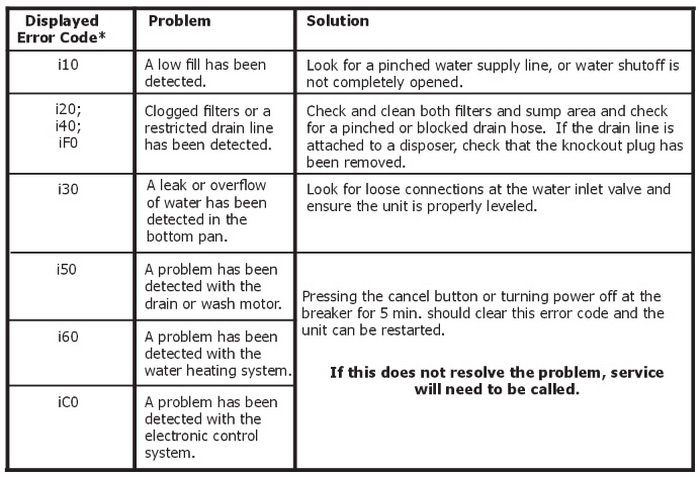
When your Frigidaire dishwasher flashes the F1 error code, think of it as your dishwasher’s way of sending out a little SOS. It’s saying, “Hey, there’s something wrong, and I need your attention.” Specifically, this code usually relates to a problem with the dishwasher’s water supply. This could be due to a variety of issues—perhaps the water isn’t flowing in properly, or there’s a blockage somewhere in the system. Whatever it is, the F1 error is your first clue to diagnosing and fixing the problem, and it’s not as scary as it might seem!
Understanding the F1 Error Code
So, let’s break down what the F1 error really signifies. In essence, this code often appears when there’s an issue with water flow or a leak inside the appliance. Imagine if water is the lifeblood of your dishwasher. If there’s a kink in the hose or a blockage, it’s like your dishwasher is dehydrated or has a leaky pipe. The F1 code is the machine’s polite way of telling you, “Help, I can’t get enough water to function properly!”
In many cases, this can be due to a problem with the water inlet valve. Think of the inlet valve as the doorman to a fancy club—if it’s stuck or not operating correctly, the water just doesn’t get in. Other common causes might include a clogged filter or a broken float switch, which is like a tiny lifeguard making sure water levels don’t get too high. When these elements malfunction, the F1 error code kicks in to alert you.
Once you’ve got the lay of the land, your next step is investigation. Take a peep under the sink and check the water supply. Is the valve fully open? If it’s barely open, it’s like squeezing a straw with your fingers while trying to drink—it just won’t work. If everything looks fine under the sink, it’s time to consider internal components, like filters or the float switch. Removing blockages or replacing a faulty part can often resolve the issue and get your dishwasher back to its functional self.
Common Causes of the F1 Error Code
Let’s talk a little more about the usual suspects behind the F1 error code. A common friend—or foe, in this case—is the water inlet valve. This piece might sound technical, but it’s just a mechanism that allows water to enter the dishwasher. If it’s faulty, the dishwasher won’t get the water it needs, triggering the error code. Imagine this valve like a gatekeeper. If it refuses to open, nothing gets through, and that’s a problem.
Another culprit could be a blocked or dirty filter within the dishwasher. Filters are like the coffee grounds basket in a coffee maker—they catch the solid particles and need regular cleaning. If they’re clogged, water can’t pass through as it should, leading to the dreaded F1 code. Think of it like trying to talk through a clogged straw—it just doesn’t work properly and ends up being more of a hassle than it should be!
Lastly, the float switch is another piece of the puzzle. This switch monitors water levels and will activate the F1 error if it senses a problem. It’s similar to a lifeguard on duty—if it’s asleep or distracted, things can go wrong quickly. If the float switch is stuck or malfunctioning, you might need to give it a once-over or even replace it to ensure it’s doing its job effectively.
Troubleshooting and Fixing the F1 Error
Okay, so now that we know the usual suspects, let’s get down to business—how to troubleshoot and fix the F1 error. First, if you’re comfortable, try resetting the dishwasher. Unplug it for a few minutes and then plug it back in. Think of it like restarting your computer when it’s acting up.
If a reset doesn’t work, take a closer look at the water supply. Check that the water valve under the sink is fully open. You can also inspect the hose for kinks, which might be restricting water flow, much like a pinched water balloon that can’t fill. If these aspects seem fine, it might be time to look inside and clean the filters. Don’t forget about the float switch—give it a jiggle to ensure it’s not stuck.
If troubleshooting doesn’t solve the problem, it could be time to call in a professional. Sometimes, the issue requires a more experienced hand or specific replacements. But don’t worry—understanding what the F1 code means and conducting these preliminary checks already puts you ahead of the game!
In conclusion, remember that error codes are not the end of the world. They’re just your dishwasher’s way of asking for a little help. By understanding and addressing these issues, you’ll keep your trusted appliance running smoothly and prevent future hiccups. Happy dishwashing!